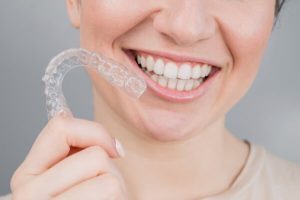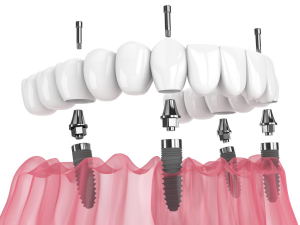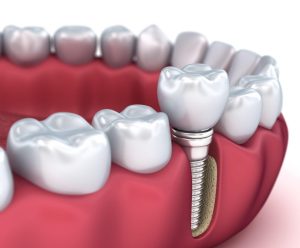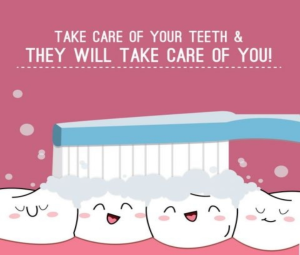Table of content
- 1. What are inter-arch elastic bands in Orthodontics?
- 2. The function of inter-arch elastic bands in Orthodontics
- 3. During which phase of Orthodontic treatment should inter-arch rubber bands be worn?
- 4. Is wearing inter-arch rubber bands painful?
- 5. How many types of inter-arch rubber bands are there?
- 6. How to wear inter-arch elastic bands during Orthodontic treatment?
Orthodontics rubber bands are one of the types of rubber bands used in the process of orthodontic treatment. However, is this type of orthodontic appliance suitable for all tooth conditions? What should people with braces pay attention to when wearing inter-arch elastic bands? All these questions will be answered in the article below.
1. What are inter-arch elastic bands in Orthodontics?
These are highly elastic rubber bands that are attached from the upper jaw to the lower jaw with the purpose of creating a stable pulling force, helping to move teeth into the desired position.
Usually, inter-arch elastic bands are hooked directly onto existing hooks of braces, but in many cases, they can be attached to mini-screws for teeth adjustment. Additionally, not all tooth conditions require the use of braces elastics. This orthodontic appliance is commonly used in traditional braces (*) specifically to address issues such as:
- Teeth misaligned to one side or both sides
- Teeth growing too far above the jawbone
- Misaligned teeth
- Protruding teeth, either in front or at the back
- Open bite malocclusion
- Khớp cắn đối đầu (khớp cắn đối đỉnh)
(*) For self-ligating braces, thanks to their smart self-sliding brackets, this method does not require the use of inter-arch elastic bands.
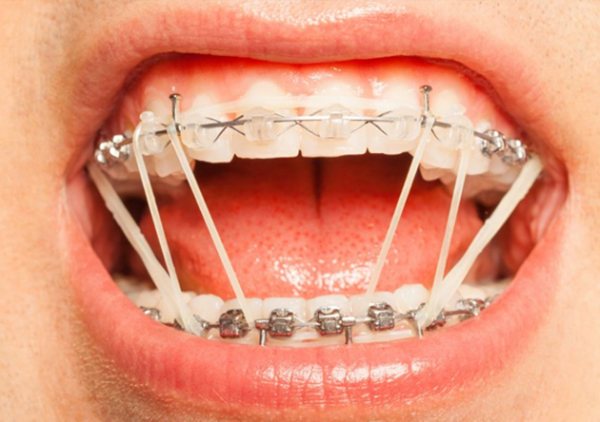
2. The function of inter-arch elastic bands in Orthodontics
During orthodontic treatment, teeth are moved back to their desired positions thanks to the pulling force generated by the archwire and braces system. However, at this point, teeth are aligned individually within each jaw arch, while the fundamental principle of orthodontics is to ensure proper alignment, bite coordination, and no discrepancies between the upper and lower jaws.
To achieve this, the best approach is to use inter-arch rubber bands with elastic threads attached to the braces, which help create the right pulling force to bring the teeth back to their proper positions while restoring a correct bite alignment, improving chewing function.
3. During which phase of Orthodontic treatment should inter-arch rubber bands be worn?
In reality, the timing for wearing rubber bands varies from person to person, depending on the condition of their teeth, bite alignment, and the speed of tooth movement.
Some individuals may start wearing them immediately after getting braces, while others may begin after 4 to 5 months of orthodontic treatment. Therefore, to determine the exact timing for wearing rubber bands, patients should consult with their orthodontist early on. Through X-rays and a comprehensive diagnosis, the orthodontist can predict when to start wearing inter-arch rubber bands and how long to wear them for the best results.
>> Tips for you: How To Choose An Experienced Orthodontist?
4. Is wearing inter-arch rubber bands painful?
During the initial days of wearing inter-arch rubber bands, patients may experience some discomfort, tooth soreness, and difficulty while eating. At that time, it’s crucial not to remove the rubber bands, as doing so can prolong the orthodontic treatment duration and increase discomfort when reapplying them later.
The best approach is for patients to gradually get accustomed to wearing the rubber bands. As the teeth start to move, the discomfort will diminish. Additionally, to alleviate pain quickly without disrupting daily activities, patients should consult with their orthodontist for the most suitable dietary adjustments and proper dental care after wearing the rubber bands.

5. How many types of inter-arch rubber bands are there?
Depending on the orthodontist’s treatment plan for each case, the choice of inter-arch rubber bands may vary based on the amount of tooth movement required. Currently, there are three basic types of inter-arch rubber bands commonly used:
- Type 1: Applied in cases to close gaps between teeth. With type 1 rubber bands, the orthodontist hooks them from the canine tooth in the upper jaw to the lower jaw to create the necessary pulling force.
- Type 2: Used when teeth need to be extracted to create anchor points. With type 2 rubber bands, the orthodontist hooks them from the first lower jaw tooth to the upper canine tooth.
- Type 3: Applied in cases where there is spacing in the lower jaw. In such cases, type 3 rubber bands help lift the upper jaw teeth while simultaneously pulling back the lower jaw teeth.
6. How to wear inter-arch elastic bands during Orthodontic treatment?
Inter-arch elastic bands are orthodontic appliances that need to be changed daily. Therefore, after receiving instructions from the orthodontist on how to wear them for the first time, orthodontic patients should remember and follow the correct method for subsequent applications. Specifically, the steps for attaching inter-arch elastic bands are quite simple. First, stand in front of a mirror and open your mouth wide. Use one or both hands to stretch the rubber bands, and then place them in the correct position as previously instructed by the orthodontist.
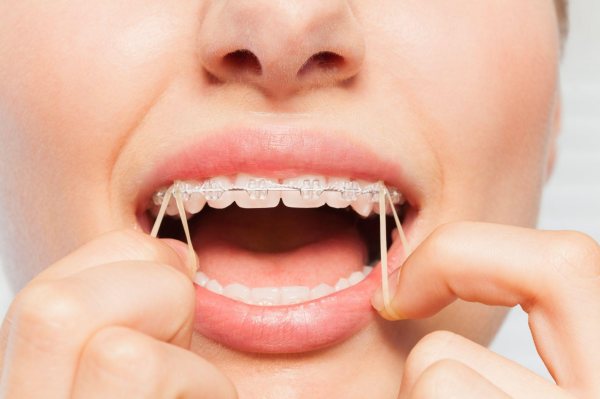
By practicing the above steps several times, you can become more proficient and easily change the rubber bands at home without needing to see the doctor. However, keep in mind some key points when wearing inter-arch rubber bands to achieve the best results:
- Wear the inter-arch rubber bands as directed by your orthodontist. Typically, they should be worn for around 20 hours a day, including during sleep.
- Remove the rubber bands while eating and cleaning your mouth to prevent them from breaking, causing pain, or damaging your gums.
- Change the rubber bands 2-3 times a day, with each change spaced 12 hours apart to maintain elasticity.
- Carry spare rubber bands when you go out to avoid situations where they might get lost or damaged.
- Wash your hands thoroughly when attaching or removing the inter-arch rubber bands.
- Store the rubber bands carefully, avoiding humid or direct sunlight areas.
- Maintain oral hygiene by brushing your teeth twice a day with a soft-bristle toothbrush and using dental floss, interdental brushes, and mouthwash to remove plaque and prevent the rubber bands from staining.
- Do not use two or more rubber bands simultaneously, as this can negatively impact tooth alignment.
- Avoid stretching your mouth too wide when wearing the rubber bands, as this may cause them to lose their elasticity, break, or fall inside your mouth.
- Inter-arch rubber bands come in various colors. You can choose colors that suit your preferences or select colors for special occasions. For example, you can choose green and red for Christmas or red and yellow for the Lunar New Year.
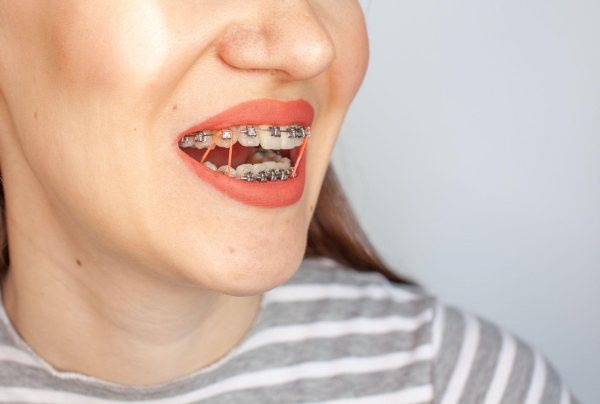
Through this article, we hope you have gained valuable information about inter-arch elastic bands. In general, these are essential orthodontic appliances that help achieve a balanced bite and bring teeth back to their proper positions, resulting in even, beautiful teeth and improved chewing function. However, to achieve the desired results, patients must pay attention to wearing the rubber bands correctly and follow the orthodontist’s instructions for proper hygiene and storage.
>> Related posts: Learn about popular orthodontic support devices for children today
At Elite Dental, the orthodontic treatment process for each patient is closely monitored by a team of highly experienced and skilled doctors. Our doctors have over 10 years of experience in orthodontic treatments, including both traditional braces and self-ligating braces. Therefore, the orthodontic procedures, including wearing inter-arch rubber bands, performed by our doctors are gentle and skillful, ensuring that patients do not feel discomfort while achieving optimal results.
Furthermore, Elite Dental regularly updates its state-of-the-art equipment, such as the 3D Trios teeth scanning technology, Clincheck software, and Sirona X-ray machines (from Germany) to support a quick and effective orthodontic process. Additionally, after the removal of braces, we provide a comprehensive warranty program to assist in addressing any issues that may arise, ensuring long-term stability and preventing relapse.
If you are in need of comprehensive orthodontic treatment for a beautiful smile, contact Elite Dental TODAY to receive our guidance and schedule a dental appointment with our doctors as soon as possible!
Related posts: > Orthodontic Treatment for Children: Types & Benefits > Things you need to know about braces for your kids


